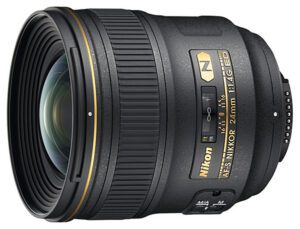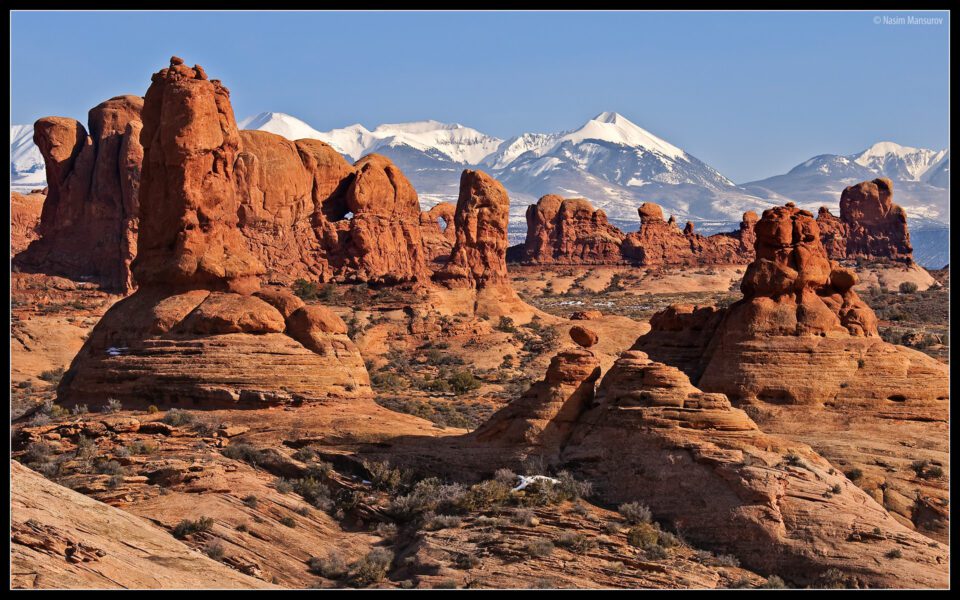Best Nikon Lenses for Landscape Photography
What are the best Nikon lenses for landscape photography? After I posted my last article on “Best Nikon Lenses for Wedding Photography“, I have been getting many requests from our readers to also talk about lenses for photographing landscapes, nature and wildlife (another post on best Nikon wildlife lenses will be published soon). In this post I will not only talk about which Nikon lenses I believe are the best for photographing landscapes, but also when I use a particular lens, along with plenty of image samples from each lens. Please keep in mind that the information I present below is a personal opinion based on my experience so far, which is subject to change. No third party lenses are presented either, although some Zeiss, Sigma, Tamron and Samyang lenses are phenomenal for landscapes. If you have a favorite lens of yours for landscape photography that is not listed below, please feel free to add a comment on the bottom of the page with some information and links to pictures (if you have any that you would like to share).
1)Nikon 14-24mm f/2.8G

I want to start out with a lens that I have a love and hate relationship with. On one side, the Nikon 14-24mm f/2.8G is one of the sharpest lenses ever produced by Nikon. It has phenomenal optics (center to corner, throughout the frame and aperture range), beautiful colors, super fast autofocus and an extremely useful focal range for wide-angle photography. On the other hand, it is a heavy, bulky and expensive lens that cannot accommodate filters. Sadly, not just circular filters and filter holders but pretty much any kind of hand-holdable filter. Its round front element shape and the built-in lens hood just make it impossible to use filters. Sure, you can buy a filter holder system from Lee and other manufacturers for this lens to accommodate filters, but it is not cheap and you would have to purchase a set of large 150mm filters, so forget about using your existing filters. I really wish Nikon allowed us to use small replaceable filters close to the lens mount, just like on telephoto lenses and this lens would have been irreplaceable.

If you do not heavily rely on various filters like I do, then you will never be disappointed with this lens – yes, it is that good. If ability to use filters is a must, the only other full-frame lens from Nikon I would consider would be the Nikon 16-35mm f/4 VRlens (see my Nikon 16-35mm VR Review). If you are a DX shooter, the Nikon 12-24mm f/4 is superb.
Here are some sample images from the Nikon 14-24mm f/2.8G:
2) Nikon 24-70mm f/2.8G
Year after year, the Nikon 24-70mm f/2.8G has been my #1 most used workhorse lens for landscape photography. While its performance is not as impressive as on the Nikon 14-24mm f/2.8G, especially in the corners at large apertures, it just needs to be stopped down to f/5.6 and smaller to unveil its true performance. It has a lighting quick AF, beautiful color rendering, extremely useful zoom range on full-frame cameras and it takes filters! But similar to the 14-24mm it also has a few problems – it is bulky, heavy, expensive and has no VR.

Ever since the superb Nikon 24-120mm f/4 VR (see my Nikon 24-120mm VR Review) has been released, I have been thinking more and more about switching to it. I have not done it for one major reason: lens build and weather sealing. The Nikon 24-70mm is built like a tank and has suffered all kinds of abuse from me. I have dropped it, exposed it to sub-zero / extremely hot temperatures, used it in very windy and dusty environments, exposed it to extreme humidity and the list goes on and on…it has survived it all and it is still performing like a champ. I honestly do not think the 24-120mm would have survived all that.
I would not recommend it for DX shooters, because it has a not-so-useful 36-105mm equivalent focal length due to the 1.5x crop factor, so something like the Nikon 16-85mm VR would be a great low-cost alternative. I had a hard time picking my favorite images from this lens, because there are too many, so here are a couple from this year:
Most of the landscape wallpapers on this website have been shot with this lens.
3) Nikon 70-200mm f/2.8G VR II
I’m sure you saw this coming – how could I not have the whole “lens trinity” with the Nikon 70-200mm f/2.8G VR II in this article? I was once approached by another photographer, who asked me what lenses I typically take with me when photographing landscapes. When I showed him my lenses and told him that I rarely leave without my 70-200mm, he was rather surprised. He thought that the 70-200mm was too long for landscape photography and asked me why I would even bother taking this bulky and heavy lens. I showed him a couple of pictures from the day before that I shot with the 70-200mm lens and right after he saw my images, he told me that he would buy it as soon as he returned home.

Landscape photography is not always just about capturing wide-angles and endless panoramas. I find myself often discovering interesting subjects that my 24-70mm is not long enough to capture and that’s when I switch to the 70-200mm to get close and tight. The Nikon 70-200mm is not just a portrait lens as you probably have come to known it – its optical performance is phenomenal for pretty much any kind of photography. The only thing you have to be careful about when shooting landscapes, is not to include any foreground elements that are close to you, or you will have a hard time getting everything in focus, unless your goal is to isolate a subject. The lens is ideal for shooting overlooks or other subjects from a distance. Every once in a while, I use the 70-200mm to shoot large panoramas as well. The only downside of this lens is its bulk and weight.
Here are some image samples of landscapes that I have shot with the Nikon 70-200mm lens:

If you have a DX camera, I would skip this lens and rather have a two lens kit comprised of the Nikon 16-35mm f/4 VR and Nikon 24-120mm f/4 VR, which would cover most of your needs. These two lenses are also great for full-frame cameras as a lower-cost alternative to the Nikon “trinity”.
S
4)Nikon 24mm f/3.5D PC-E
The Nikon 24mm f/3.5D PC-E is a special-purpose wide-angle tilt/shift or “perspective control” lens that is ideal for landscape photography. One of the biggest challenges of landscape photography is to bring everything from the closest foreground element to the farthest object in the background into perfect focus. While stopping down the lens certainly helps, you will often find yourself in situations, where you have to emphasize a foreground object by staying very close to it and yet stopping down the lens will not provide sufficient depth of field to capture everything in focus. In addition, stopping down lenses beyond f/11 on full-frame cameras and beyond f/8 on cropped-sensors cameras reduces image quality due to an optical phenomenon known as diffraction. Hence, it is often not a good idea to stop down too much. One option is to use a focus stacking technique, where you take a series of images focused at different points and then use post-processing software to combine those images. However, focus stacking only works well if your scene is very still and none of the objects are moving, so wind and immediate changes in ambient light could spoil the result.

By using a tilt/shift lens, you can tilt the focus plane in such a way that you could bring the entire scene in perfect focus even at large aperture values. The lens physically tilts up, down, left and right to give you full control over depth of field. There are several potential issues with using this lens. First, it is a manual focus lens. Second, it is a fixed focal length lens, which means that you will have to move around to compose your shot. Third, it only properly fits pro-level DSLRs like Nikon D700 and Nikon D3s and has limited movement on smaller DSLRs. And finally, it is not an easy lens to use and you will have to learn how to properly use the tilt/shift capability and compute depth of field depending on the tilt position. Once you master this lens, it is hard to find anything else that could beat it. Needless to say, its sharpness, contrast and colors are top notch.
Here are some of my image samples from this gem:
5) Nikon 24mm f/1.4G
If you are looking for the sharpest lens Nikon has ever produced, check out the Nikon 24mm f/1.4G – it is practically flawless in terms of optical performance. This is one lens that I would not hesitate using on any camera body, even the upcoming high-resolution full-frame Nikon DSLRs, because it is one of those lenses that will out-resolve any sensor out there. Aside from its astounding sharpness, contrast and colors, it has a very wide aperture range from f/1.4 to f/16, giving you the versatility to use it for multiple photography needs – from landscape photography to portraiture (especially low-light situations).

Some photographers initially complained about autofocus issues with this lens, but I believe that they might have gotten some bad samples from the first batch, because I have shot with three different samples by now and I did not have any AF problems whatsoever. Lola and I rely on this lens quite heavily for our photography work. Here are some image samples from this beautiful lens:
Please let me know if you have any questions!















very usefull
ReplyDelete